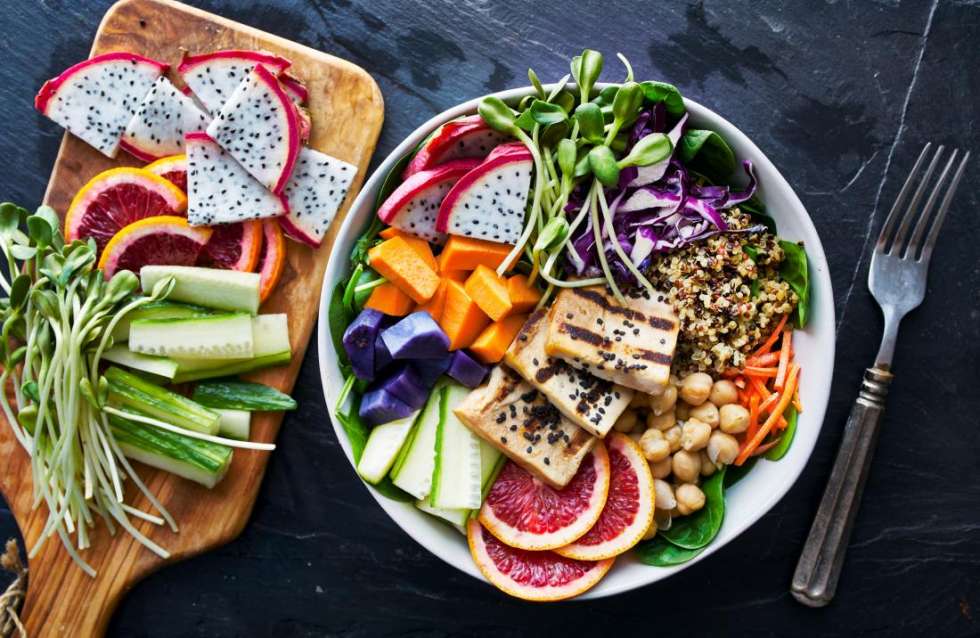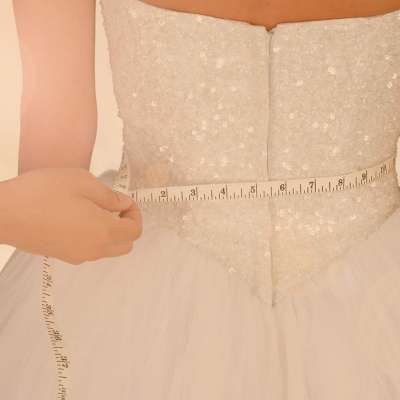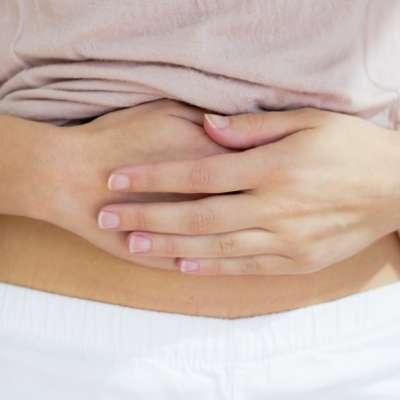What You Need to Know About the Dash Diet

Are you a bride-to-be looking to lose some weight before your wedding? We came across the latest diet trend that is helping women drop a dress size and getting a flatter tummy just in time for NYE. Also, if you’re a bride and your wedding is in a few weeks, this is definitely worth a try.
We hate unhealthy diets that make you lose weight but also make you look very pale and sick from the lack of nutrition.
While the DASH diet was originally developed as an eating style to help lower blood pressure, it has been found to also be a fabulous plan for weight loss.
The DASH diet (Stands for Dietary Approaches to Stop Hypertension), was developed by the nutritionist Marla Heller and was recently voted the healthiest diet in the U.S. by a panel of doctors.
The Daily Mail has recently posted an exclusive extract of that diet from Marla’s book “The DASH Weight Loss Solution.”
“Over the next two weeks, you can not only drop a dress size and flatten your tummy but fire up your metabolism and train your appetite to resist all those calorific treats you’ll be tempted by over the festive season.” The Daily Mail reports.
he diet has special benefits for people who carry their excess weight around the middle or those who have metabolic syndromes such as type 2 diabetes, PCOS, or postmenopausal weight gain.
To sum up the DASH eating plan:
Emphasizes vegetables, fruits, and fat-free or low-fat dairy products include whole grains, fish, poultry, beans, seeds, nuts, and vegetable oils limits sodium, sweets, sugary beverages, and red meats
In terms of nutrition content, DASH is:
- Low in saturated and trans fats
- Rich in potassium, calcium, magnesium, fiber, and protein
Phase 1
This diet consists of 2 phases: Phase 1: 14 days for the next 14 days, include moderate-sized servings of these 3 food groups in every main meal.
(A portion of meat, fish, and poultry should be the size of your palm. A handful of beans, nuts, lentils, and soy foods. A portion of cheese should be the size of a small matchbox.)
1. Foods that are protein-rich and low in saturated fat. These include:
- Lean meats
- Fish and poultry
- Beans and lentils
- Soy foods
- Low-fat cheeses
- Eggs
- Unsweetened or artificially sweetened yogurt (one small pot per day)
2. Heart-healthy fats. These are foods that contain omega-3 and polyunsaturated fats, which have been shown, if eaten regularly, to have beneficial effects on circulation and reduce the risk of heart disease. Good sources include
- Avocados
- Vegetable oils, especially olive, rapeseed, and nut oils. Note that coconut oil and palm oil are excluded, since they are high in saturated fat, along with salad dressings, especially those based on these two oils.
3. Foods that are protein-rich and contain healthy fats. These include
- Nuts (preferably non-roasted and unsalted) and seeds
- Fatty fish such as salmon and mackerel.
PLUS: As much sugar-free, fruit-flavored jelly as you want — this will become your fruit and dessert substitute. All vegetables, with the exception of starchy vegetables such as potatoes and corn, are also unlimited.
Avoid starchy foods (other than beans). This means no bread, pasta, potatoes, rice, and all foods fried in batter, sugary foods (which includes fruit, fresh, frozen, dried or tinned), alcohol, caffeinated beverages, and milk.
Phase 2
In phase 2, you should continue to eat some protein and plenty of vegetables at every meal, but you can start to add wholegrains (no more than three portions) and fruit (two portions) to your daily diet. You can also ramp up your exercise regime with more aerobic activity and toning exercises.
One portion of wholegrain = 1 slice wholemeal bread; half a wholemeal muffin; half a wholemeal bread roll; half a cup cooked wholemeal pasta or brown rice; half a jacket potato or three new potatoes with skins on, or onetablespoon wholegrain cereal.
One portion of fruit = 1 small piece of fresh fruit; half a glass of fruit juice; 1 dessertspoon of dried fruit; 2 tablespoonof canned fruit in juice.You will continue to lose weight, although slightly slower after the initial reset phase, but it’s a plan you can enjoy for life.
Tips
- Eat 3 meals a day, plus morning, afternoon, and optional pre-dinner snack. Do not skip any of the main meals or snacks. This will keep your blood sugar steady, and help you avoid hunger.
- Challenging fitness activities such as jogging, Zumba, aerobics, cycling, and weight training should be avoided. Instead, try to do no more than 30 minutes of light or moderate activity per day. Moderate activity such as walking or gentle yoga will keep blood sugar stable and burn belly fat.
- Go to bed earlier. You may initially feel less energetic on this two-week ‘jump start’ program. Don’t worry, your energy levels will go back to normal once you move on to Phase Two of the program.
- Drink plenty of fluids. Avoid caffeine and instead aim for at least eight glasses of water, vegetable juice, and herbal tea a day.
- Don’t cut out salt altogether. This 14-day program can be dehydrating. Without starchy and sugary foods, your body will flush out excess fluid more quickly than usual. Allowing yourself to have plenty of drinks and a moderate amount of salty foods will help prevent too much fluid loss.
- Relax. You may get frustrated in the middle of the jump-start period. Your body is going through lots of changes, all for the better. Keep going, it will get easier. Focus on your weight-loss results. Your success will keep you motivated and make it easier to stay on track. It is absolutely OK to weigh yourself daily; it will build an aura of success.
















